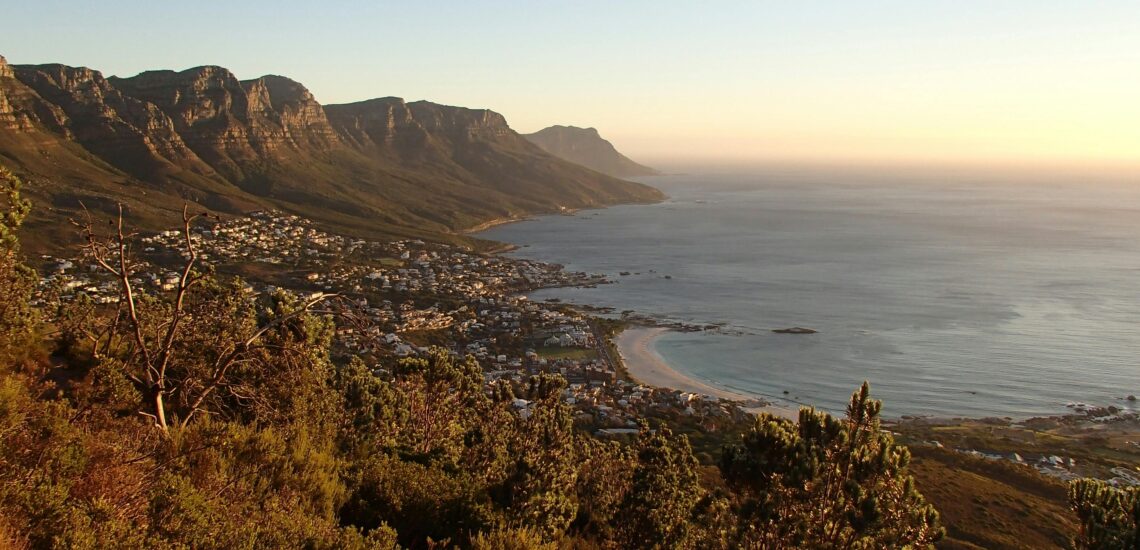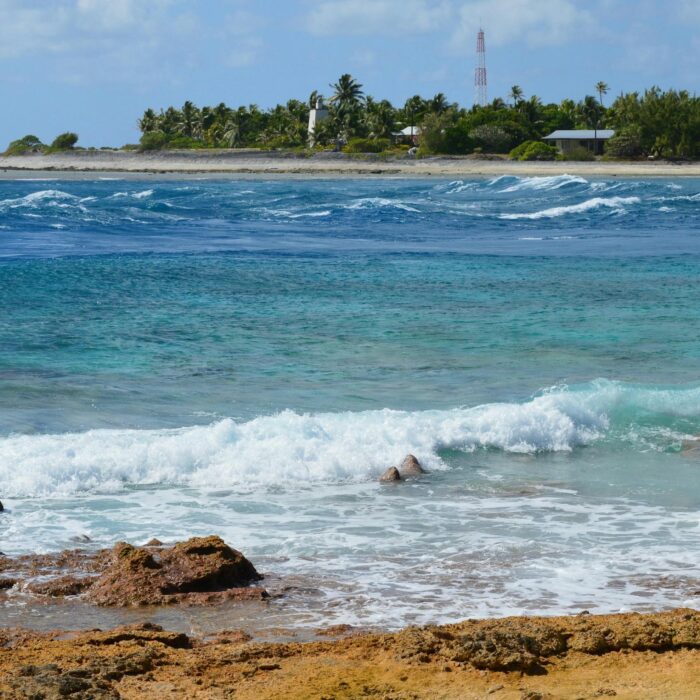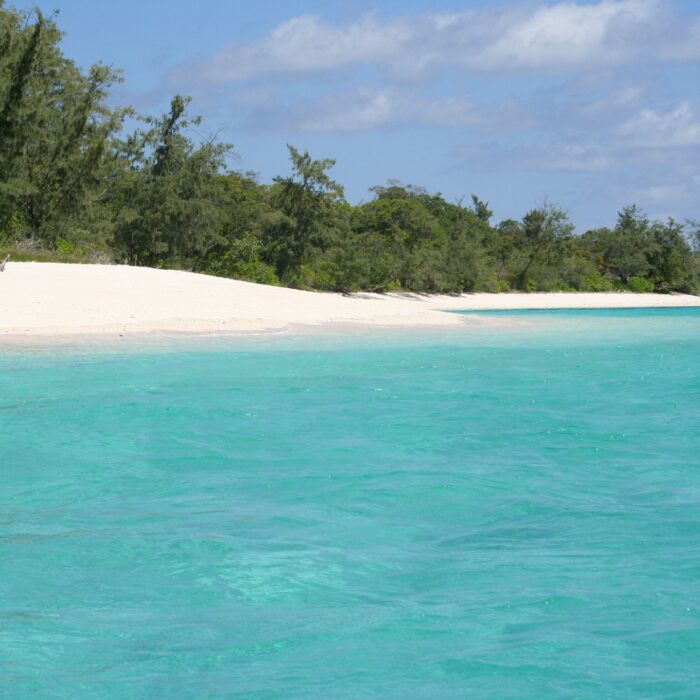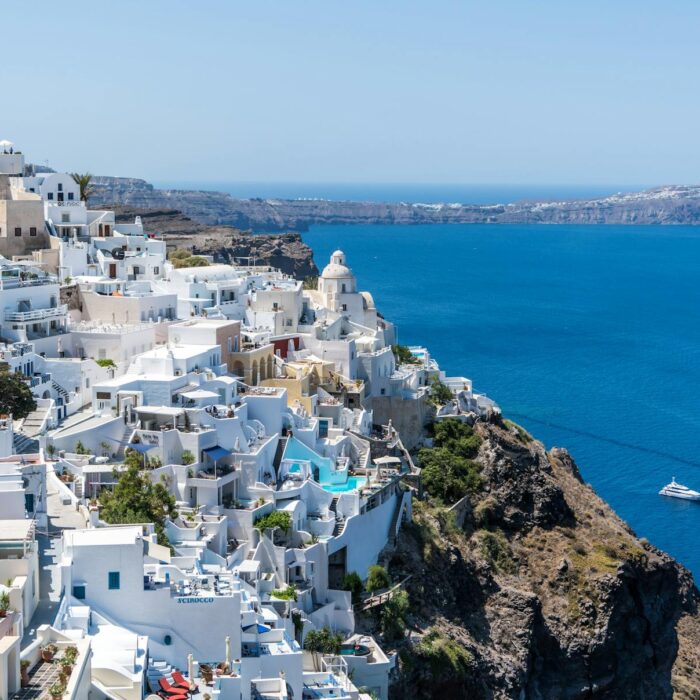Quelques informations sur l’Afrique du Sud:
- Population: Environ 60 millions d’habitants.
- Capitale: L’Afrique du Sud a trois capitales: Pretoria (exécutif), Bloemfontein (judiciaire) et Le Cap (législatif).
- Plus grande ville: Johannesburg.
- Langues officielles: L’Afrique du Sud compte 11 langues officielles, dont l’anglais, l’afrikaans, le zoulou, le xhosa et le sesotho.
- Monnaie: Le rand sud-africain (ZAR).
- Gouvernement: République parlementaire unitaire.
- Principales religions: Le christianisme est la religion dominante, avec des croyances indigènes et d’autres religions telles que l’islam, l’hindouisme et le judaïsme.
- Géographie: Le pays est situé à l’extrémité sud de l’Afrique : Située à la pointe sud de l’Afrique, l’Afrique du Sud est bordée par la Namibie, le Botswana, le Zimbabwe, le Mozambique et l’Eswatini (Swaziland). L’Afrique du Sud entoure également le royaume indépendant du Lesotho. Le pays présente des paysages variés, notamment des savanes, des montagnes, des forêts et des côtes le long de l’océan Atlantique et de l’océan Indien.
Fait 1: L’Afrique du Sud est une destination très prisée pour les safaris
Sa riche biodiversité, ses infrastructures bien développées et ses nombreuses réserves de gibier en font l’un des principaux lieux d’expérience de la vie sauvage.
Les visiteurs de l’Afrique du Sud peuvent explorer des parcs nationaux renommés, tels que le parc national Kruger, où ils peuvent rencontrer les «Big Five» (lion, léopard, rhinocéros, éléphant et buffle) ainsi que de nombreuses autres espèces. Le mélange d’infrastructures touristiques modernes et d’écosystèmes diversifiés permet de réaliser des safaris de luxe ou des expériences plus rudes et aventureuses. L’engagement de l’Afrique du Sud en faveur de la conservation et du tourisme durable renforce encore son attrait en tant que destination de choix pour ceux qui souhaitent rencontrer de près la faune africaine dans ses habitats naturels.
Fait 2 : En tant qu’ancienne colonie britannique, le pays roule à gauche
Cette pratique a été établie pendant la période de domination britannique et est restée en vigueur depuis l’indépendance du pays. De nombreux pays d’Afrique australe, dont le Zimbabwe et la Zambie, suivent également ce système, reflétant l’influence historique du colonialisme britannique dans la région.
La conduite à gauche est l’un des héritages durables de la gouvernance britannique et joue un rôle clé dans la sécurité routière et les normes de transport de la région. Les visiteurs de l’Afrique du Sud sont souvent invités à tenir compte de cette différence, en particulier ceux qui viennent de pays où l’on conduit à droite.
Remarque: si vous prévoyez de voyager de manière indépendante dans ce pays, vérifiez si vous avez besoin d’un permis de conduire international en Afrique du Sud pour louer et conduire une voiture.
Fait 3: L’Afrique du Sud compte pas moins de 9 sites classés au patrimoine mondial de l’UNESCO.
Ces sites vont de merveilles naturelles à des lieux au patrimoine culturel important, mettant en valeur les racines historiques profondes du pays et son importance environnementale :
- Robben Island (1999):
Située au large du Cap, Robben Island est l’endroit où Nelson Mandela a été emprisonné pendant 18 de ses 27 ans. Elle symbolise la lutte contre l’apartheid et a servi de prison depuis le XVIIe siècle, accueillant des prisonniers politiques, des lépreux et d’autres personnes. Aujourd’hui, elle rappelle avec force le chemin parcouru par l’Afrique du Sud vers la liberté et la démocratie. - Parc de la zone humide de Simangaliso (1999):
Cette vaste zone humide, située sur la côte nord-est de l’Afrique du Sud, présente une remarquable diversité d’écosystèmes, notamment des marécages, des récifs coralliens et des savanes. iSimangaliso abrite un large éventail d’animaux sauvages, notamment des hippopotames, des crocodiles et des centaines d’espèces d’oiseaux, ce qui en fait une destination clé pour la conservation de la biodiversité. - Le berceau de l’humanité (1999):
Situé au nord-ouest de Johannesburg, ce site contient l’une des plus riches concentrations de fossiles humains primitifs, dont des restes vieux de plus de 3 millions d’années. Il a joué un rôle crucial dans la compréhension de l’évolution humaine, avec la découverte d’australopithèques et d’autres hominidés. - uKhahlamba Drakensberg Park (2000):
Situé dans les montagnes du Drakensberg, ce parc est un site du patrimoine mondial à la fois naturel et culturel. Il présente des paysages de montagne spectaculaires, une riche biodiversité et plus de 35 000 exemples d’art rupestre san. Le parc est également important pour ses espèces endémiques et menacées. - Paysage culturel de Mapungubwe (2003):
Autrefois au cœur du plus important royaume précolonial d’Afrique australe, Mapungubwe a prospéré entre le IXe et le XIVe siècle. Le site contient les ruines de la capitale royale et présente les premiers exemples de commerce avec le monde de l’océan Indien, ainsi que des objets impressionnants comme le célèbre rhinocéros en or. - Région florale du Cap (2004, étendu en 2015):
Cette région est l’un des points chauds de la biodiversité mondiale, contenant près de 20 % de la flore africaine. Elle couvre environ 90 000 kilomètres carrés et abrite des milliers d’espèces végétales, dont beaucoup sont endémiques à la région. La zone est vitale pour les efforts de conservation des plantes au niveau mondial. - Dôme de Vredefort (2005):
Le dôme de Vredefort, situé à environ 120 kilomètres au sud-ouest de Johannesburg, est le plus grand et le plus ancien cratère d’impact visible au monde, créé par l’impact d’une météorite il y a environ 2 milliards d’années. Le site offre aux géologues une occasion unique d’étudier l’histoire de la Terre et les effets de ces impacts massifs. - Paysage culturel et botanique du Richtersveld (2007):
Cette région semi-désertique du nord-ouest de l’Afrique du Sud est habitée par le peuple Nama, qui mène un mode de vie pastoral nomade. Le site est reconnu pour ses traditions culturelles et sa flore désertique unique, en particulier pour les connaissances approfondies de la communauté en matière de gestion de cet environnement hostile. - Montagnes de Barberton Makhonjwa (2018): Les montagnes de Barberton Makhonjwa, dans le Mpumalanga, sont considérées comme l’une des plus anciennes roches exposées sur Terre, avec des formations datant de 3,6 milliards d’années. Ces roches offrent des informations inestimables sur l’histoire de la Terre, notamment sur les origines de la vie et le développement de l’atmosphère et des océans de la planète.
Fait 4: L’Afrique du Sud est le berceau de l’humanité et le paradis des paléontologues
L’Afrique du Sud est souvent considérée comme le berceau de l’humanité en raison des remarquables découvertes de fossiles dans des régions telles que le berceau de l’humanité, classé au patrimoine mondial de l’UNESCO. Cette région, située au nord-ouest de Johannesburg, a livré certains des fossiles les plus anciens et les plus significatifs des premiers temps de l’humanité, offrant des informations cruciales sur l’évolution humaine. Des fossiles d’hominidés anciens tels que l’australopithèque et les premières espèces d’homo ont été découverts dans ses grottes calcaires, datant de plusieurs millions d’années.
Pour les paléontologues, l’Afrique du Sud est un paradis car elle offre un registre riche et varié de la vie à différentes périodes géologiques. Les sites riches en fossiles du pays, y compris des régions comme le bassin du Karoo, ont produit non seulement des restes humains, mais aussi des vertébrés anciens et des fossiles de plantes datant de centaines de millions d’années.
Fait 5: L’Afrique du Sud est un grand producteur de vin
L’Afrique du Sud est l’un des principaux producteurs de vin au monde. Elle est connue pour ses vins de grande qualité et sa longue tradition viticole qui remonte au XVIIe siècle. L’industrie viticole du pays se concentre principalement dans la région du Cap-Occidental, qui offre des conditions idéales pour la viticulture grâce à son climat méditerranéen et à la diversité de ses sols.
L’Afrique du Sud est réputée pour produire une grande variété de vins, dont les cépages les plus populaires sont le chenin blanc, le sauvignon blanc et le cabernet sauvignon. Le Pinotage, un croisement entre le Pinot Noir et le Cinsault, qui a été développé dans le pays, est l’une de ses contributions les plus remarquables à l’industrie viticole mondiale. L’industrie du vin joue un rôle crucial dans l’économie sud-africaine, contribuant de manière significative aux exportations et au tourisme, en particulier dans des régions comme Stellenbosch et Franschhoek, qui sont internationalement reconnues pour leurs vignobles et leurs domaines viticoles.
Fait 6: La montagne de la Table est l’une des plus anciennes de la planète
La montagne de la Table, située au Cap, en Afrique du Sud, est l’une des plus anciennes montagnes de la planète, dont l’histoire géologique s’étend sur environ 600 millions d’années. Cette ancienne montagne est principalement composée de grès, déposé au cours de la période cambrienne, et a été façonnée par des millions d’années d’activité tectonique, d’érosion et d’altération. Son profil emblématique de sommet plat résulte de l’usure progressive de ses pics autrefois plus élevés, laissant derrière lui le plateau distinctif que nous voyons aujourd’hui.
Outre son importance géologique, la montagne de la Table revêt une grande importance culturelle et naturelle. C’est un symbole majeur de la ville du Cap et une attraction touristique de premier plan, qui offre des vues à couper le souffle sur la ville, l’océan Atlantique et les paysages environnants.
Fait 7: Les côtes de l’Afrique du Sud sont un endroit idéal pour observer les migrations océaniques
Les côtes sud-africaines offrent des possibilités exceptionnelles d’observation des migrations océaniques, ce qui en fait un lieu de prédilection pour les amateurs de faune et de flore marines. Le vaste littoral du pays, qui s’étend sur plus de 2 500 kilomètres, donne accès à plusieurs routes migratoires clés empruntées par diverses espèces marines.
L’un des événements migratoires les plus connus est la migration annuelle des baleines franches australes, qui se rendent dans les eaux côtières de l’Afrique du Sud entre juin et octobre. Ces baleines quittent leurs aires d’alimentation en Antarctique pour se reproduire et mettre bas dans les eaux plus chaudes de la côte sud-africaine, en particulier autour d’Hermanus et du Cap-Occidental. La région est réputée pour ses possibilités d’observation des baleines, de nombreuses excursions permettant de rencontrer de près ces créatures majestueuses.
En outre, les côtes sud-africaines sont importantes pour l’observation de la migration d’autres espèces marines, notamment les requins, les dauphins et les tortues de mer. La remontée des sardines, qui a lieu entre mai et juillet, est un autre événement migratoire spectaculaire : des milliards de sardines remontent la côte, attirant une variété de prédateurs et offrant un spectacle spectaculaire de la vie marine. Cette riche diversité d’événements migratoires fait de l’Afrique du Sud une destination de choix pour l’observation de la faune marine.
Fait 8: Après le colonialisme, la minorité blanche a pris le pouvoir dans le pays
Après la fin du régime colonial en Afrique du Sud, la minorité blanche a mis en place un système de gouvernance profondément ancré dans la ségrégation et la discrimination raciales. Cette période, connue sous le nom d’apartheid, a débuté en 1948 lorsque le Parti national, qui représentait les intérêts de la minorité blanche, est arrivé au pouvoir.
L’ère de l’apartheid: Le régime de l’apartheid a mis en œuvre une série de lois et de politiques destinées à renforcer la ségrégation raciale et à maintenir le contrôle de la minorité blanche sur les systèmes politiques, économiques et sociaux du pays. Les Sud-Africains non blancs étaient confrontés à une discrimination systémique et soumis à de sévères restrictions de leurs droits et libertés. Il s’agissait notamment de la mise en place d’installations séparées, de la restriction des déplacements et de l’accès limité à une éducation et à un emploi de qualité.
Transition vers la démocratie: Le système d’apartheid s’est heurté à une résistance croissante, tant au niveau national qu’international. Dans les années 1980, les troubles internes et la pression internationale ont conduit à des négociations en vue d’une transition pacifique vers la démocratie. En 1994, l’Afrique du Sud a organisé ses premières élections multiraciales, qui ont abouti à l’élection de Nelson Mandela en tant que premier président noir du pays et à la fin officielle de l’apartheid. Cela a marqué le début d’une nouvelle ère axée sur la réconciliation et la reconstruction d’une société plus inclusive et démocratique.
Fait 9: Le springbok est l’animal national de l’Afrique du Sud
Le springbok est l’animal national de l’Afrique du Sud et revêt une valeur culturelle et symbolique importante pour le pays. Cette élégante antilope est connue pour son comportement particulier : elle effectue de grands sauts bondissants qui sont considérés comme une démonstration de force ou une stratégie pour échapper aux prédateurs.
Le pelage brun clair du springbok, avec son ventre blanc et sa bande sombre caractéristique, en fait un élément reconnaissable et emblématique de la faune sud-africaine. Il figure également en bonne place dans les symboles nationaux du pays, notamment les armoiries et l’emblème de l’Union sud-africaine de rugby.
Fait 10: L’Afrique du Sud est le premier pays africain à autoriser le mariage entre personnes du même sexe
L’Afrique du Sud est le premier pays africain à légaliser le mariage entre personnes du même sexe. Cette décision historique a été prise lors de l’adoption de la loi sur l’union civile en 2006, qui permet aux couples homosexuels de se marier et de bénéficier des mêmes droits et de la même reconnaissance juridique que les couples hétérosexuels.
Ce changement législatif important a marqué une étape progressive dans l’approche de l’Afrique du Sud à l’égard des droits des personnes LGBTQ+, reflétant l’engagement du pays en faveur de l’égalité et des droits de l’homme. La légalisation du mariage homosexuel en Afrique du Sud a été un moment historique, créant un précédent pour les autres nations africaines et mettant en évidence le rôle du pays en tant que leader en matière de droits LGBTQ+ sur le continent.

Publié Septembre 15, 2024 • 12m à lire





